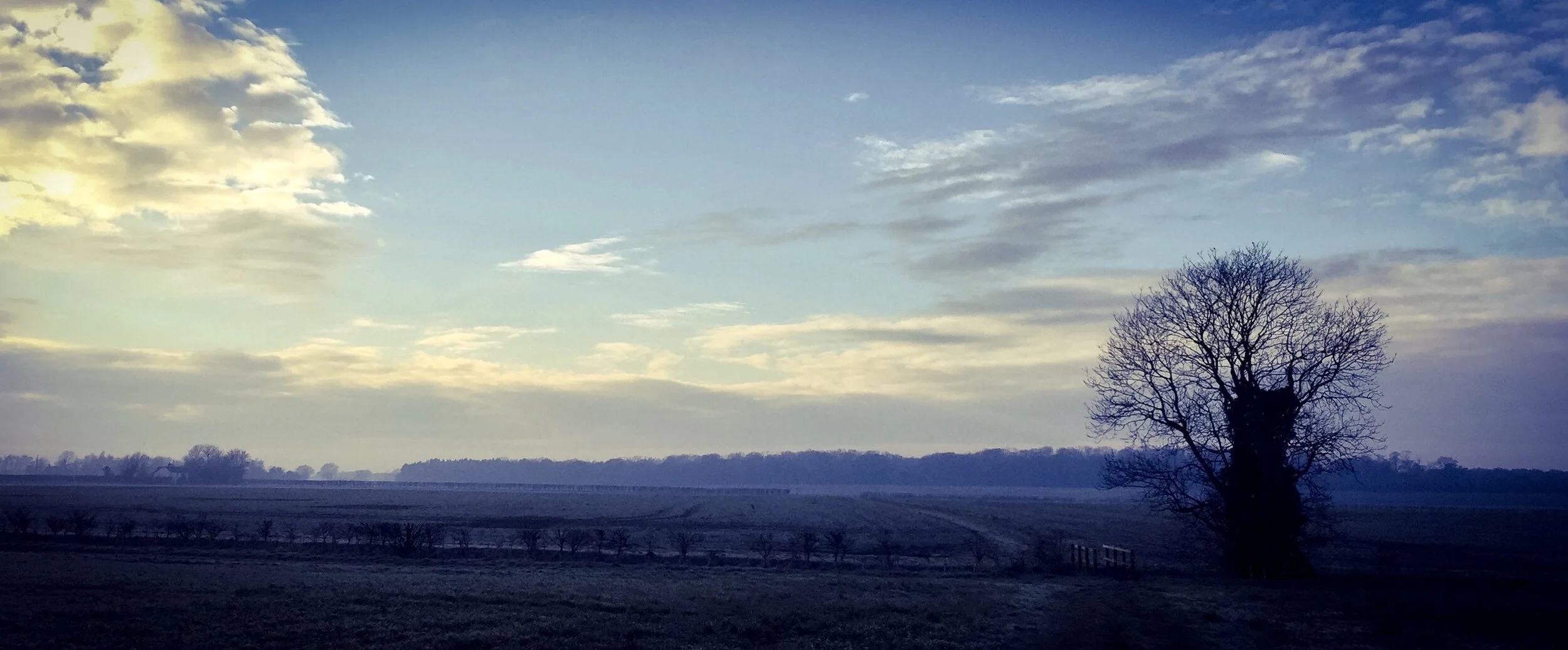Flatland
Flatland: iPhone
“Another world is not only possible, she is on her way.
On a quiet day, I can hear her breathing.”
(Arundhati Roy)
I live on the edge of the Flatland.
Over the years, I have come to know it as a place of confrontation.
I try to take time each day to cycle across at least some part of its expanse and, though I’ll never wear a King of the Mountains jersey, I could easily be a contender for King of the Ever-Shifting Headwinds.
But I’ve learned that the Flatland isn’t impressed by ‘been there T-shirts’ or symbols of achievement. There are no organisational PowerPoints of suited teams pulling each other to summit celebrations out there. No-one cheers each mile; certainly not the last one. And you won’t be troubled by coffee-time motivation via Zoom call; there’s no signal. And no noise.
The only breathing you can hear is your own.
The Flatland is the quiet place of endurance; it’s about grinding out another mile across stark, lonely beauty, big skies and that damn headwind. It is about feeling into both strength and weariness, finding confidence and resourcefulness. Knowing there is more of each; knowing there is more of you.
A puncture or a fall? You’re on your own. Deal with it.
The first time it happens? Miles from safety or help? It feels frightening. Chilling, as that wind tears at you.
The second time? You know the drill. This is OK. Anyway, it’s warmer today.
Weeks ago, I cycled through water. Changing climate and a month of rain left the roads and pathways awash.
Not just splashing through puddles, here and there, but freezing water as far as I could see, calf-deep on each downstroke of the pedals, dragging at the wheels of my bike. I was pleading with myself not to lose balance, not here. Not into this…
Today I cycled the Flatland as it was coming back to life. Green shoots, recovering grassland, grazing animals. Over a couple of miles, the road rose by maybe three feet and I made my way past Top Farm, which had just stayed dry throughout the floods. Close margins.
This land flattens our external experience; no lofty peaks, no golden valleys. But it opens up an internal landscape of consequence and embodied knowing. Feelings arise and conclusions are reached; ideas rehearsed, tested against breathless miles and a million heartbeats. Stark sunlight and darkened shadows decide the route. The road rushes by. You get to know yourself.
And as I turn for home the wind shifts again, momentarily pushing at my back, so I fly; empty roads, smooth tarmac.
An hour-long lockdown ride done. A cup of tea and a protein bar.
It seems like we are all finding ourselves differently these days.
And we’ll be back tomorrow. The headwind waiting while everything has else changed.
Notes:
I realise that the Flatland isn’t for everyone. I live just on the Northern edge of the East Anglian Fens. Slightly further South, Richard Mabey wrote ‘Nature Cure’; a beautiful book which weaves landscape, poetry and keen observation into his writing. It’s an extraordinary piece of work which chronicles his recovery from depression among the Norfolk Broadlands.
W.G. Sebald travels along the East Anglian coast on foot throughout ‘The Rings of Saturn’. It’s an extraordinary read; intricately threaded narratives, beautiful prose and haunting imagery.
There’s an awful lot written on the psychology of competitive cycling which is not really my kind of thing but I did like this little article, “Einstein & the Art of Mindful Cycling” by Ben Irvine on the MHF website. It’s worth a look.
See Also:


